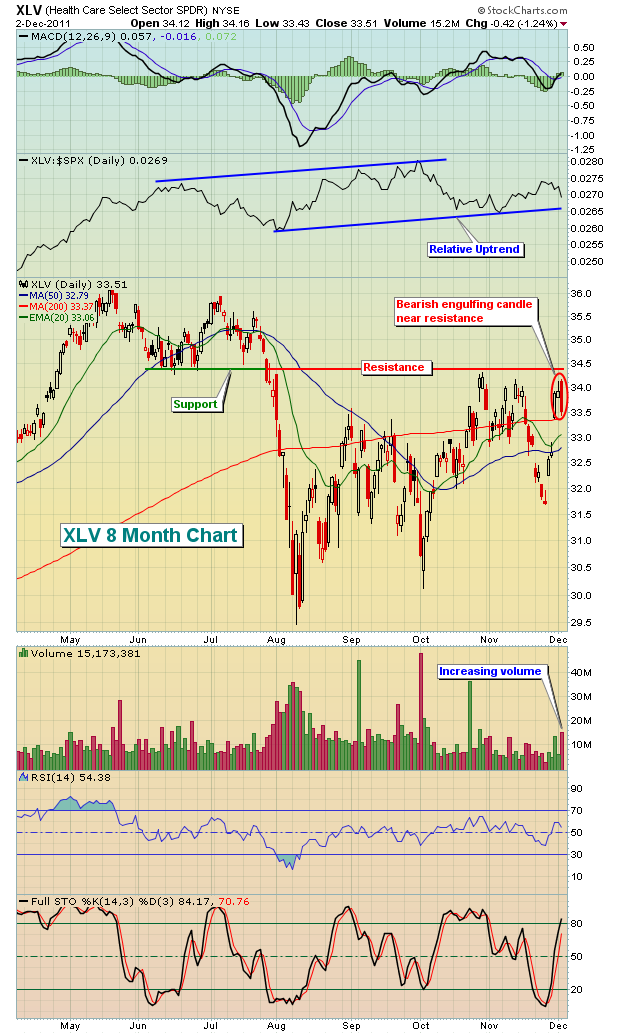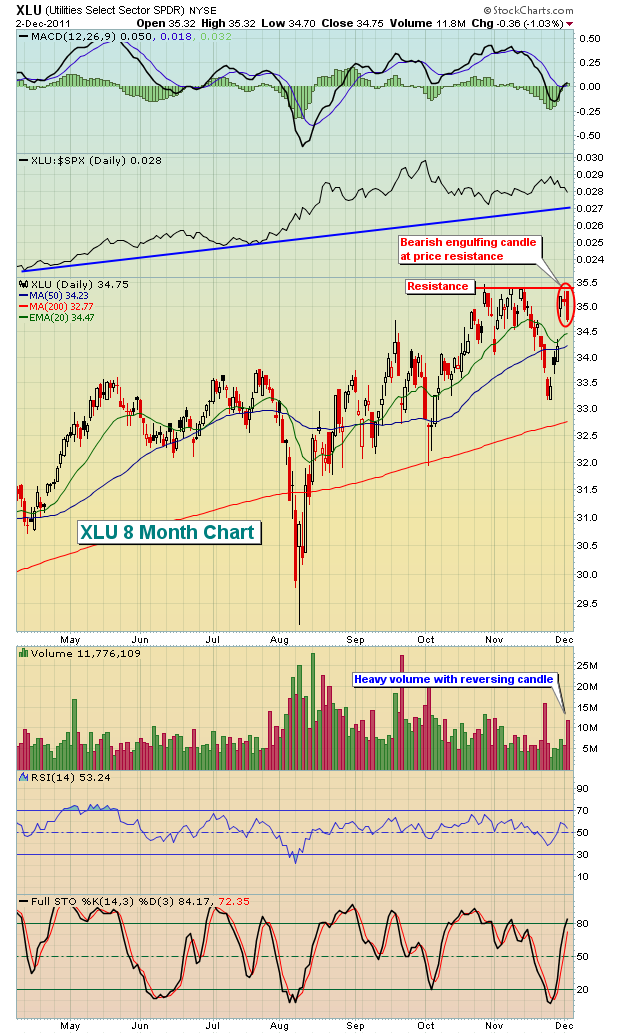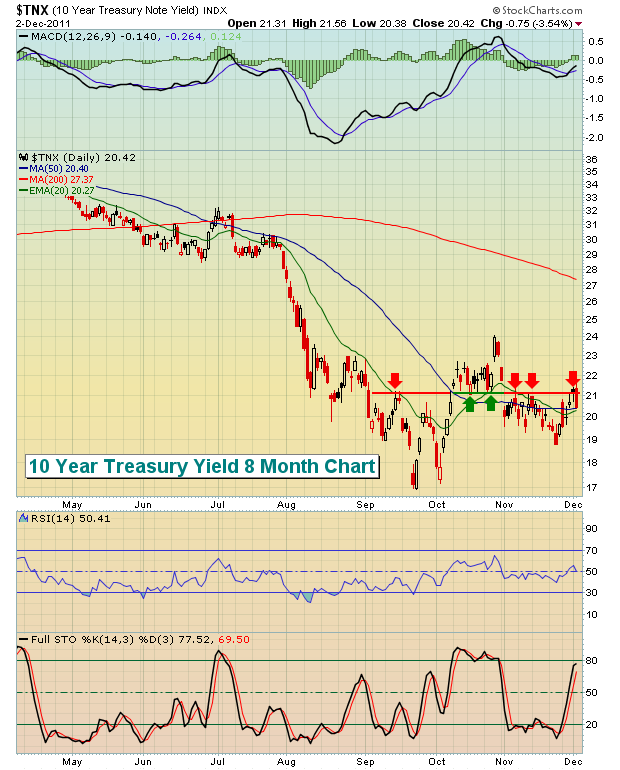With one week left to go, the S&P 500 was on the verge of its worst November in the last sixty years. Then the Fed and other central bankers came to the rescue of global markets last week and everything was just peachy again (sarcasm intended). November turned out to be a flat month with the S&P 500 falling approximately 0.5%. If you're on the short side of the market, Ben Bernanke is likely your biggest enemy.
Despite the huge rally last week, technical obstacles remain. Key price resistance is now evident on all three of the defensive sectors. Let's look at the ETFs that track these defensive groups - healthcare, utilities and consumer staples:
The resistance on each of the above charts is fairly obvious. But price resistance isn't my biggest concern. Did you notice the relative strength line on each of these defensive sector charts? They all are printing higher lows. The rising relative strength line in defensive stocks was one of the biggest warning signs the market flashed back in late April as our major indices topped. It's NEVER a good sign to see money flowing towards safety. That's the kiss of death for the stock market. We want to see investors and traders willing to take on MORE risk, not less.
In another startling move to safety, the bond market reversed course on Friday, just as it appeared we were seeing a key technical breakdown. Bond yields, which move inversely to bond prices, had broken out on Friday morning after the news that the U.S. unemployment rate had unexpectedly fallen to 8.6%. It turned out to be a head fake, however, as the yield tumbled back beneath closing resistance by day's end. Check this out:
The 10 year treasury yield posted a reaction high in early September at 2.11%, then proceeded to mark a significant low near 1.70%. That became the trading range until the breakout in the second week of October. Upon that breakout, 2.11% became the support on the yield. But the yield began tumbling in late October and 2.11% support was lost. We have yet to rebound back above that technical level, though we had great opportunities on both Thursday and Friday to do just that. We failed miserably on Friday with a very ugly long red candle. Yields have had a strong history of leading stock market action the past several years. We can't take the yield's failure last week too lightly.
The November flight to treasuries and the continuing relative strength of defensive sectors paint a not-so-great picture of our current market environment. Throw in the volatility and daily gaps because of uncertainty in Europe and it simply spells trouble for equity investors and traders. Don't believe me? Ask the MF Global traders. Or the Goldman Sachs market making unit. Or John Paulson, hedge fund manager extraordinaire, who last week issued an apology for losing investors 44% year-to-date in his Advantage Plus Fund. This market is taking down EVERYONE. In my view, the best strategy of late has been to take up bowling.
There are signs to look for in determining when the market is primed for a sustainable rally. Those signs haven't emerged. Studying the behavior of ETFs and their relative strength can provide us valuable clues, however. That is the subject of a FREE ETF webinar that I'll be leading on Tuesday evening. If you're interested in more information, CLICK HERE.
Happy Trading!










